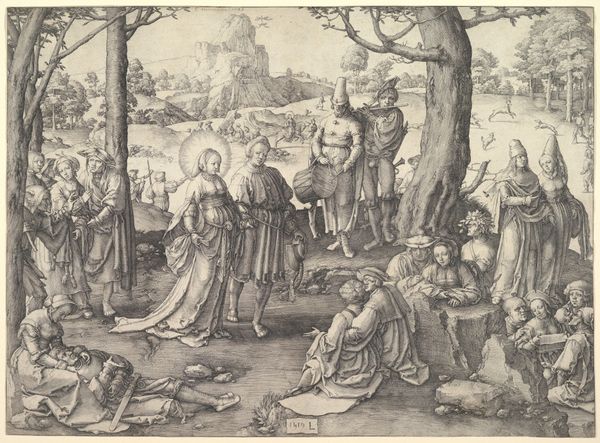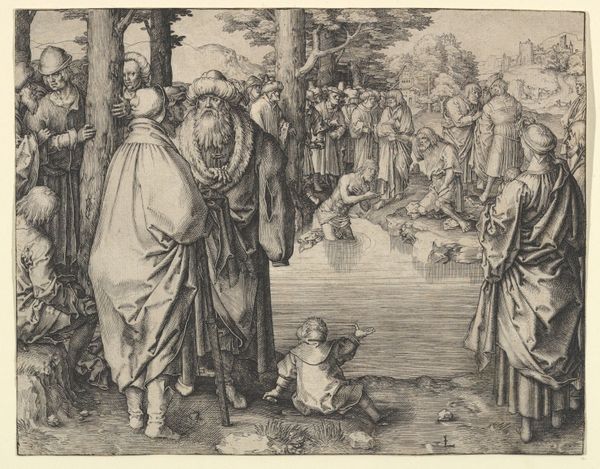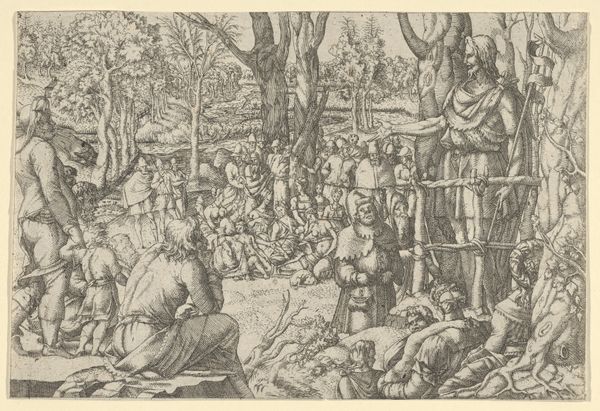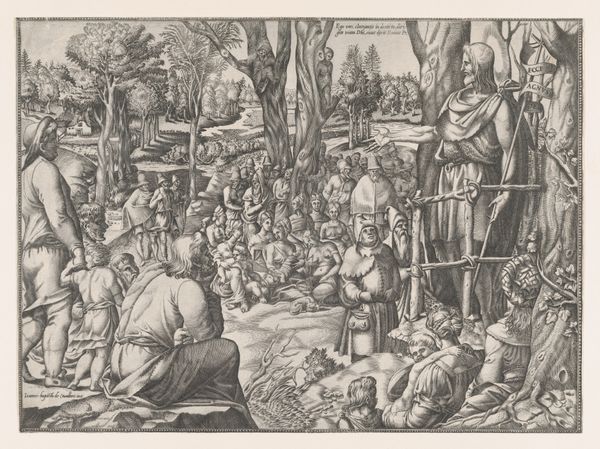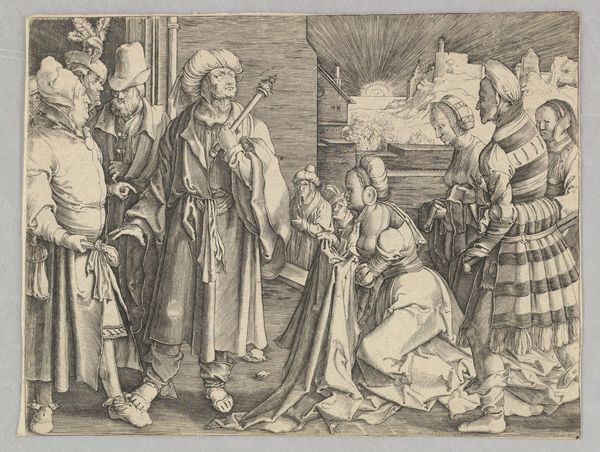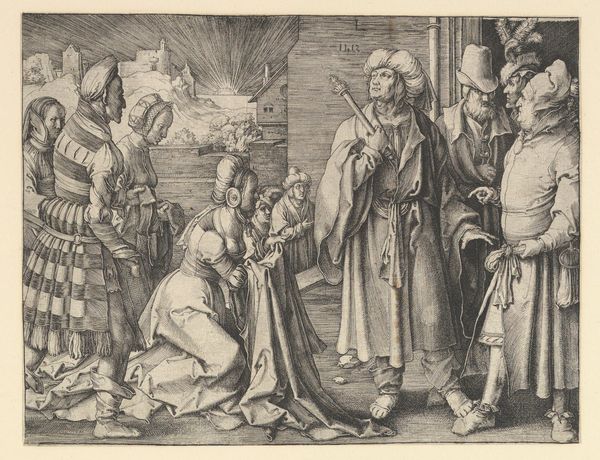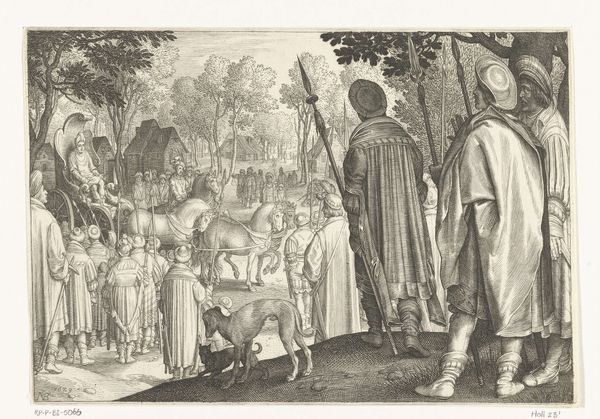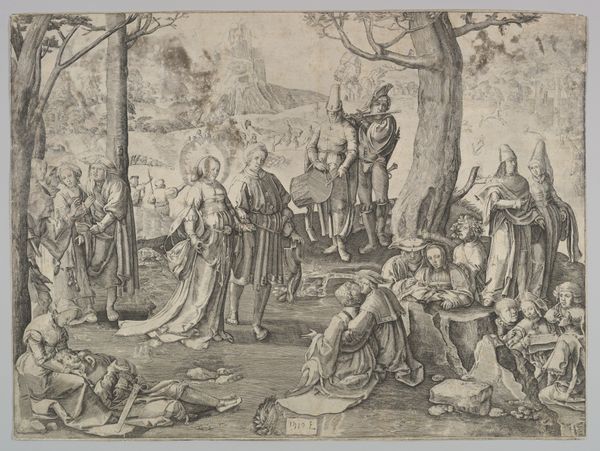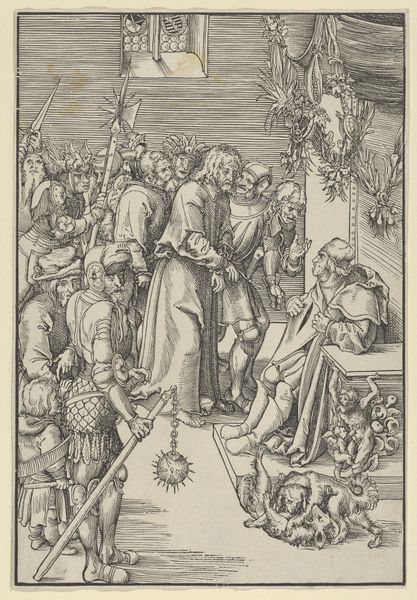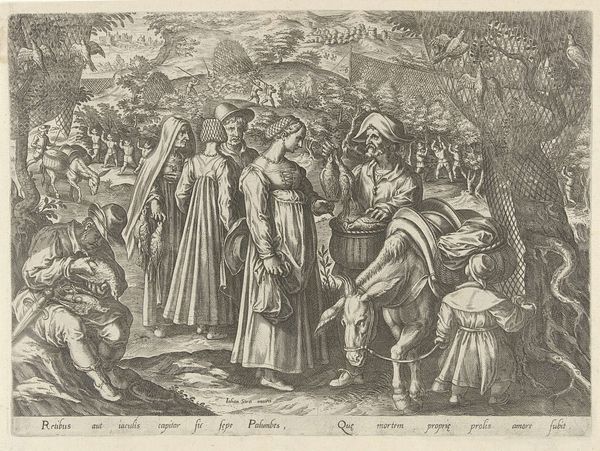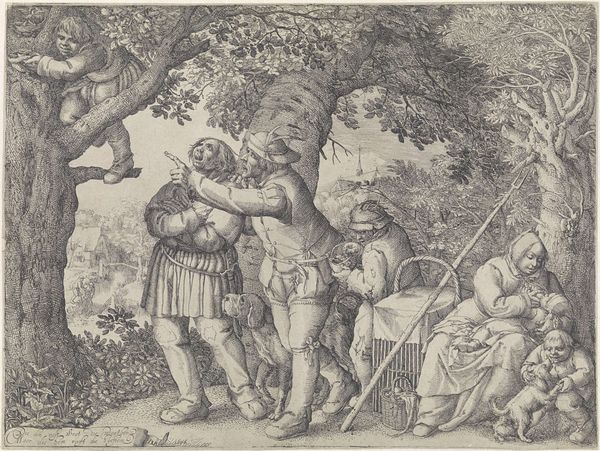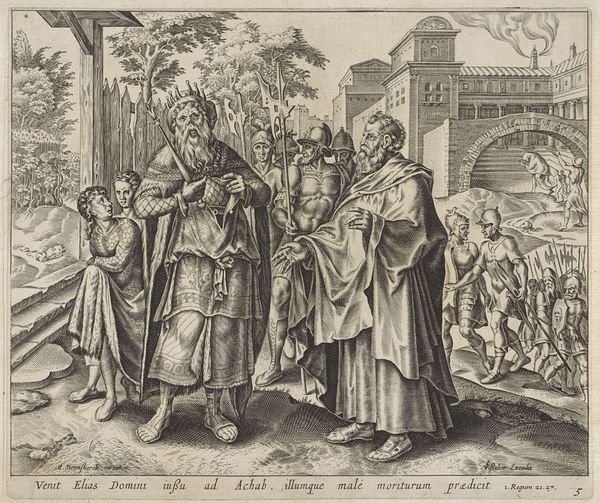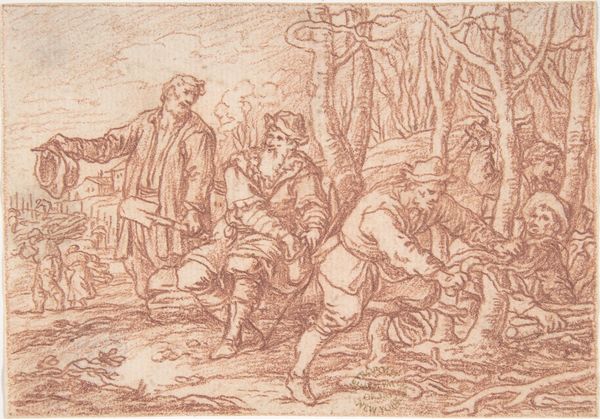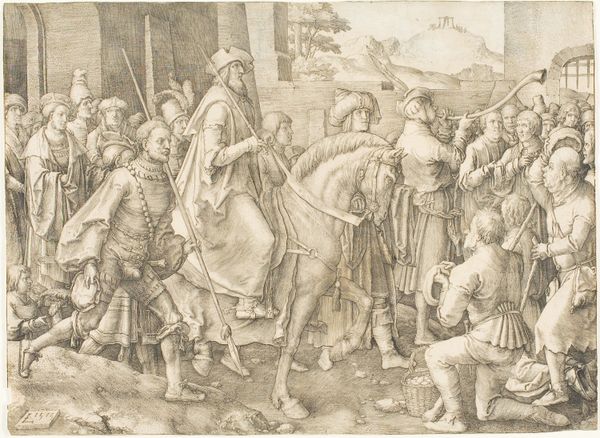
drawing, print, paper, ink, engraving
#
drawing
#
narrative-art
# print
#
paper
#
ink
#
northern-renaissance
#
engraving
Dimensions: 143 × 182 mm (image/sheet, trimmed within platemark)
Copyright: Public Domain
Curator: So, we have before us Lucas van Leyden's "The Baptism of Christ in the River Jordan," circa 1510. An engraving on paper, currently residing at the Art Institute of Chicago. Editor: This piece is so detailed! I’m really struck by the scale of the figures in relation to the landscape – it feels almost crowded, but deliberate. What historical context can you provide to understand the message that was trying to be sent? Curator: Precisely! The compression of space and the figural groupings are characteristic of Northern Renaissance prints. This work coincides with growing humanist thought and religious reform. Where do you think this engraving fits into that complex picture? Editor: Given its biblical subject, it must have been made to serve some sort of didactic purpose, but who was it trying to reach? A scholar or a wider population? Curator: It circulated broadly, of course, made possible by the printing press. That accessibility is key. It wasn't confined to wealthy patrons. These images fostered a personal connection with religious narratives. Now, how does that affect how we understand religious art’s impact? Editor: That is fascinating! The democratization of images allowing personal interpretations makes the Reformation all the more potent, then! The placement in the Art Institute signifies a change in how it has come to be valued now. Curator: Indeed, it has transitioned from a devotional object to an object of art-historical study. It's a stark example of shifting cultural value. I find it helpful to see art within such political systems, to question their use and display through museums. Do you find value in approaching works this way? Editor: Definitely! Thanks, this has been incredibly insightful! Considering religious art as an actively political object really alters the meaning of these works. Curator: Absolutely! The museum transforms this image into more than just a biblical depiction, highlighting the institution’s role as a place that can transform religious material.
Comments
No comments
Be the first to comment and join the conversation on the ultimate creative platform.
